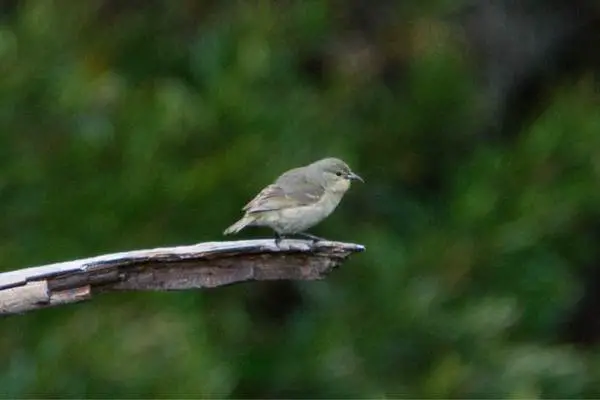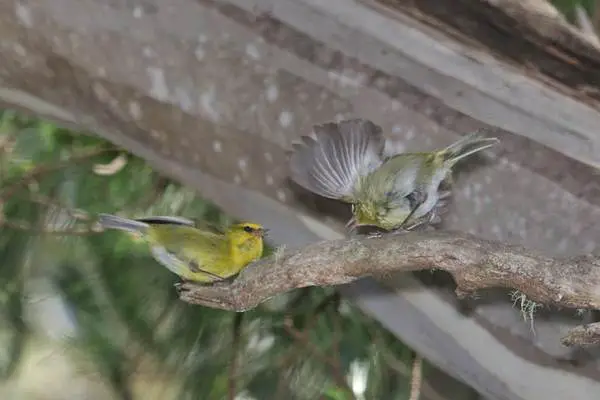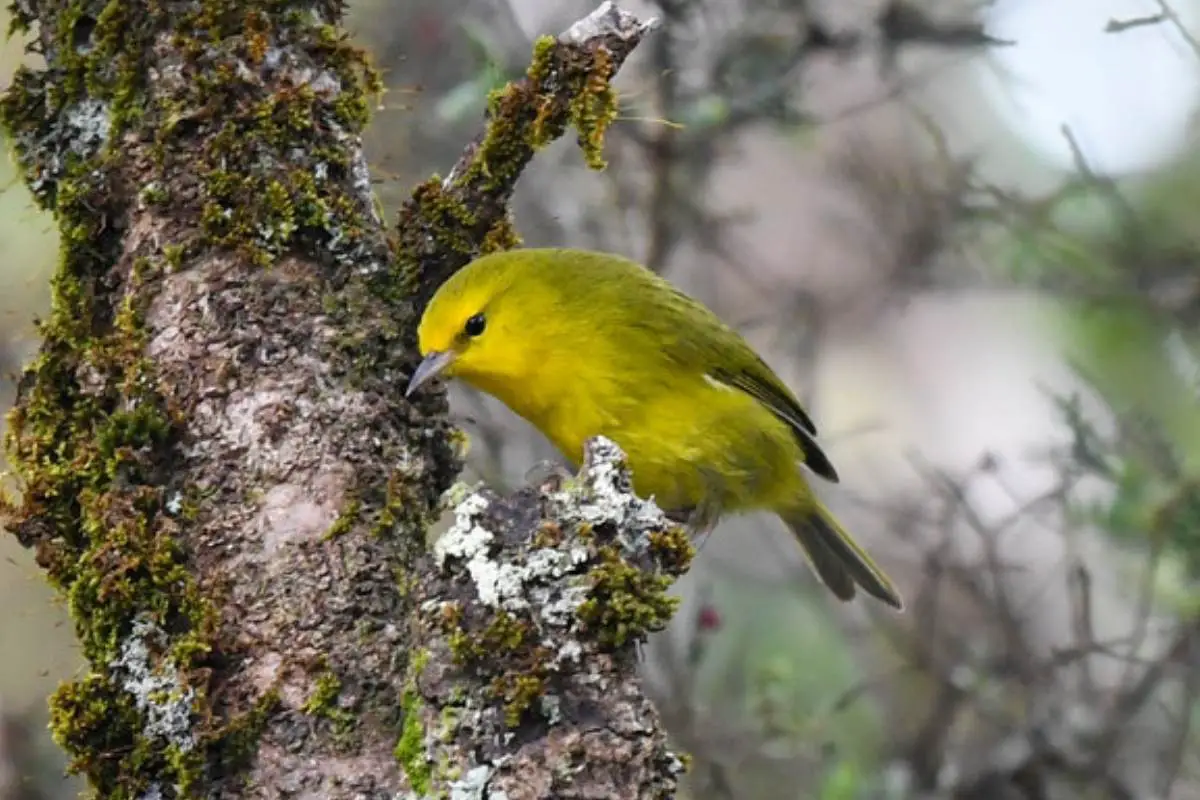Maui creeper on a tree | image by John Leszczynski via Flickr | CC BY-SA 2.0
If you reside on the Hawaiian island of Maui, you may have encountered some of the small Maui creepers. These birds are endemic to Maui Island and are one of the few honeycreeper species left in Hawaii.
It’s difficult not to be fascinated by these species due to their friendly and sociable personalities. So, we’ve compiled everything you need to know about Maui creepers.
Common Name: Maui Creeper
Scientific Name: Paroreomyza montana| Size | Diet | Range in Hawaii | Status in Hawaii |
|---|---|---|---|
| 4.5 in. | moths, beetles, spiders, leafhoppers, lacewings, and ichneumonid wasps. | Maui Islands | Endangered |
Maui creeper

Scientific Name: Paroreomyza montana
Appearance
Maui creeper is a small bird that’s endemic to the island of Maui in Hawaii. This species begins as a medium-gray with a whitish underside, and as the birds mature, they develop different color patterns such as gray, yellow, and olive.
The adults have olive-green and bright yellow feathers that differ slightly between males and females. Male adults have an olive green color above and bright yellow color on their face, throat, and belly.
Although they share the same color as adult males, females’ hues aren’t as bright as the males’. They also have short, pointed bills that are gray or black in color.
Diet
The Maui creeper is an insectivorous bird that primarily feeds on invertebrates in its environment. They typically use their beaks to forage for food in the bark, leaves, branches, and twigs of trees.
These birds are usually seen searching for food on plant species native to the island, such as hia, alani, koa, pilo, helo, lapa, klea, and pkiawe. They would also search for moths, beetles, spiders, and wasps in areas where Maui parrothills had previously excavated.
Behavioral traits
Maui creeper is a very social and friendly bird. They’re seen in groups of 2-6 birds, each of which consists of two adults and four young birds: two of which are from the current breeding season and the other two from the previous year.
The adults are aggressive and usually chase other bird species away from their nests. They use their sharp chirp to call members of their family group. On the other hand, the males can be heard singing in a fast and bouncing style that sounds like kweedy, k-weedy, k-weeet.
Breeding

The breeding season for Maui creepers runs from March to August. The females will select a nest at this time and lay up to two eggs there. They’ll seek out new locations and build new nests if they’re unable to lay eggs.
Following hatching, the young birds remain with their parents for 18 to 20 months and assist in raising the new hatchlings during the following breeding season. The helpers will assist in feeding the adult female, nestlings, and fledglings. These young birds will have to wait three years before they can breed and leave their nest to start their own family.
Habitat
The birds in Hawaii can be found in wet and dry-mesic montane forests. In dry forests, you can find them in areas where pines and eucalyptus are abundant. The birds also prefer moist forests that are rich in ‘ōhi‘a. They live in the barks of trees and hunt for food there.
Native Range
This small bird is only found in the Maui Islands. You can find it at elevations ranging from 900 to 2,500 meters on the slopes of Mount Haleakala, as well as at Hosmer’s Grove in Haleakala National Park and Polipoli Springs State Recreation Area.
The State of Hawai’i, the National Park Service, and private landowners, including the Nature Conservancy, have also been managing this species’ range to help conserve and thrive in their natural habitat.
Conservation Status
According to the IUCN, the Maui creeper is an endangered bird species. Its population has been declining due to habitat destruction and the spread of invasive species, such as strawberry guava and blackberry, which reduce the quality of their habitat.
Avian malaria and the avian pox virus are two other factors contributing to the endangerment of this species. This is carried by an alien southern house mosquito, which has reduced the population of these Hawaiian birds.
Other causes include predation, wildfires, and climate change.
Interesting Facts
1. They’re among the species of honeycreepers in Hawaii
Maui creepers are among the 50 species of Hawaiian honeycreepers, a group of small birds that inhabit the islands of Hawaii.
2. Their average size is only 5 inches
Maui creepers are small birds that can grow up to 5 inches in length and weigh 20-25 g.
3. They were once found on both Lanai and Maui, but are now only found on Maui
The Maui creeper is only found in the Hawaiian Islands and was once endemic to both Lanai and Maui. However, this species is now only found in Maui due to various factors that wiped out their population on Lanai, including a deadly disease spread by mosquitoes.
4. Maui creepers only have one partner for life
These birds are monogamous, meaning they only mate with one partner throughout their life. When raising their young, male and female birds will usually stay together in the same area. They’re also very territorial, defending their territory from other birds of the same or different species.
5. They have multiple names
Maui creeper’s other names include Maui Alauahio, and Maui Nui Alauahio, which reflect their historical distribution, including Lanai.
Frequently Asked Questions
How many species of honeycreepers are there in Hawaii?
There were once over 50 different species of honeycreepers, but due to a variety of factors, only 17 of those species are still alive today in Hawaii.
Why are they called Maui creepers?
Because of the way they forage for food, these birds are called “creepers.” They’re also named after the Hawaiian island of Maui, where they originated.
Why are honeycreepers only found in the Hawaiian Islands?
Due to the honeycreepers’ distinct evolutionary history, they’re only found in the Hawaiian Islands. They descended from an ancestral rosefinch that migrated to Hawaii millions of years ago and evolved into new species that adapted to the islands’ unique conditions.




